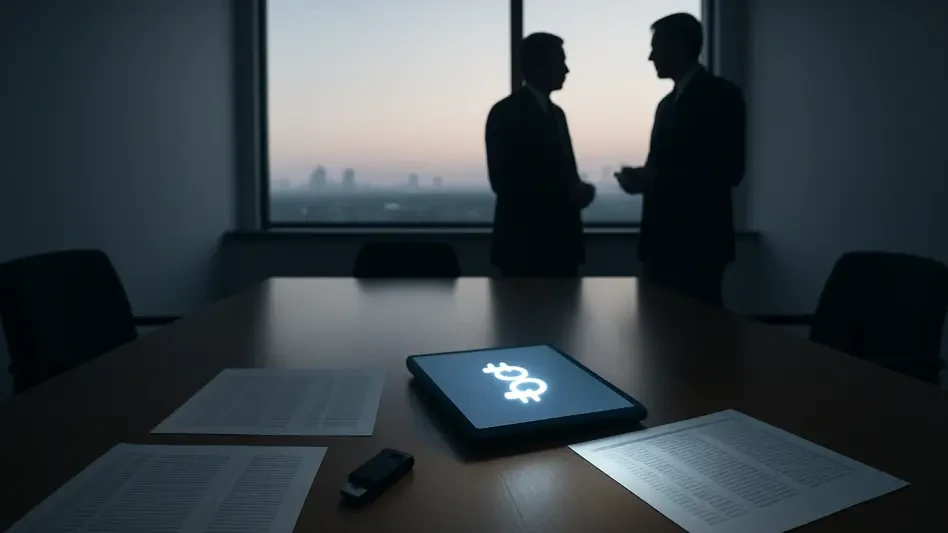In a digital era where businesses are increasingly intertwined through complex networks, a single breach can unleash chaos across industries, as demonstrated by a catastrophic cyber-attack on a major British automaker in August of this year. This incident, targeting Jaguar Land Rover (JLR), has been labeled the most economically damaging cyber event in UK history, with losses estimated at a staggering £1.9 billion ($2.55 billion). The attack disrupted not only the company’s operations but also rippled through its vast supply chain, affecting over 5,000 organizations nationwide. As reported by the Cyber Monitoring Centre (CMC), an independent body established earlier this year to evaluate such incidents, the scale of this event underscores the vulnerability of interconnected systems. It serves as a grim reminder of how dependent modern economies are on robust cybersecurity, sparking urgent conversations about the need for enhanced defenses and systemic resilience in the face of escalating digital threats.
Unpacking the Scale of the Incident
Economic Devastation and Immediate Fallout
The financial impact of the cyber-attack on JLR is nothing short of staggering, with the £1.9 billion loss marking it as a historic blow to the UK economy. This figure, calculated by the CMC, accounts for a range of disruptions, including halted production at key manufacturing plants in Solihull, Halewood, and Wolverhampton. For weeks, assembly lines ground to a halt, creating a domino effect that delayed orders and strained relationships with suppliers. Beyond direct losses, the costs of incident response, IT system recovery, and business interruptions further compounded the damage. The CMC has classified this as a Category 3 systemic event on its five-point scale, highlighting how the breach extended far beyond JLR itself. Dealerships faced intermittent system outages, while downstream businesses grappled with uncertainty over future production volumes. This incident reveals how a single point of failure in a major corporation can destabilize an entire economic ecosystem, exposing the fragility of modern industrial networks.
Ripple Effects Across the Supply Chain
Beyond the immediate financial toll, the attack on JLR has illuminated the profound interconnectedness of global supply chains and their susceptibility to cyber threats. Over 5,000 organizations linked to the automaker—ranging from small suppliers to large dealers—felt the repercussions, with many facing canceled contracts or delayed shipments. The disruption wasn’t confined to manufacturing; it seeped into logistics, inventory management, and customer-facing operations, creating widespread uncertainty. Experts have noted that such systemic events can erode trust between business partners, as smaller firms dependent on JLR struggled to absorb the losses. The CMC warns that if operational technology within these plants sustained lasting damage, the total economic impact could climb even higher. This scenario underscores a critical lesson: in today’s hyper-connected world, a cyber-attack on one entity is rarely isolated, often triggering a cascade of challenges that can persist long after systems are restored.
Addressing the Broader Implications
Long-Term Risks and Geopolitical Concerns
While the immediate £1.9 billion loss is quantifiable, the long-term consequences of the JLR cyber-attack may prove even more severe, particularly when considering the potential theft of sensitive data. Industry experts caution that trade secrets or proprietary designs could have been compromised, providing competitors or hostile entities with a strategic advantage. Such intellectual property losses are difficult to measure but could lead to significant market disadvantages over time. There’s also a chilling possibility of state-sponsored actors orchestrating similar attacks on multiple British firms of national importance. If coordinated, such efforts could cripple critical infrastructure, disrupt essential services like power or internet, and even destabilize the UK economy. This geopolitical dimension adds a layer of urgency to the incident, as it highlights not just corporate vulnerabilities but also national security risks that demand immediate attention and fortified defenses.
Calls for Stronger Cybersecurity Frameworks
In the wake of this unprecedented attack, there’s a growing consensus among experts and policymakers that both corporate and governmental approaches to cybersecurity must evolve. Suggestions include mandatory audits for companies deemed nationally significant, ensuring they meet stringent data protection and cyber resilience standards beyond current regulations. There’s also a push for corporate leaders to prioritize cybersecurity as a core strategic risk, akin to financial or operational concerns, rather than an afterthought. Integrating robust defenses into business models is no longer optional but essential to prevent similar catastrophes. Additionally, collaboration between public and private sectors is seen as critical to building a unified front against sophisticated cyber threats. The JLR incident has sparked a pivotal dialogue about accountability, urging a cultural shift where safeguarding digital assets becomes a shared responsibility across industries and government bodies.
Reflections on a Historic Breach
Lessons Learned from a Costly Incident
Looking back, the cyber-attack on JLR in August stood as a defining moment that exposed the brittleness of interconnected business systems and the devastating potential of digital threats. The £1.9 billion loss, coupled with disruptions to thousands of organizations, painted a sobering picture of what’s at stake when cybersecurity fails. This event not only halted production at major facilities but also strained supply chains and eroded confidence across sectors. The CMC’s detailed assessment, combined with expert warnings about stolen intellectual property and geopolitical risks, emphasized the multifaceted nature of the crisis. It became clear that the true cost extended beyond immediate financial damage, touching on long-term competitive disadvantages and national security concerns. Reflecting on this incident, the urgency to rethink how businesses and governments approach digital defense was undeniable, marking a turning point in the UK’s cybersecurity narrative.
Charting a Path Forward for Resilience
As the dust settled on this landmark breach, the focus shifted to actionable strategies that could prevent such widespread fallout in the future. Strengthening cybersecurity frameworks through stricter regulations and proactive audits emerged as a key priority for protecting critical industries. Encouraging corporate boards to embed digital risk management into their core strategies was another vital step, ensuring that vulnerabilities are addressed before they’re exploited. Furthermore, fostering partnerships between government agencies and private enterprises could enhance threat intelligence sharing and response capabilities. Investing in cutting-edge technologies to detect and mitigate attacks before they escalate is also essential. The JLR incident served as a harsh wake-up call, but it also presented an opportunity to build a more resilient digital landscape, where systemic risks are anticipated and neutralized through collective effort and forward-thinking policies.








